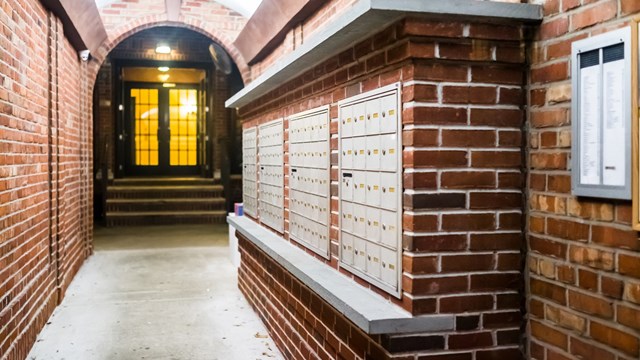
Co-op, condo owners and board members understand certain truths; one is that whether aesthetic, mechanical or otherwise, every building will require repair, upgrades and improvements. Determining what is a capital project versus what is a cosmetic project is often confusing and can cause significant problems when determining budgets and project timelines.
Capital Ideas
The New York State Department of Taxation and Finance (NYS DTF) spells out the difference clearly in its Publication 862: Sales and Use Tax Classifications of Capital Improvements and Repairs to Real Property.
A capital improvement is an addition or alteration to real property that:
• Substantially adds to the value of the real property, or appreciably prolongs the useful life of the real property;
• Becomes part of the real property or is permanently affixed to the real property so that removal would cause material damage to the property or article itself; and is intended to become a permanent installation.
Carole Newman, CPA at the accounting firm of Newman, Newman & Kaufman, LLP, in Syosset, explains that “a capital project will extend the useful life of a physical facility by more than five years or materially increase the market value of an existing facility,” she continues. “A capital project will enlarge or structurally renovate buildings or install major equipment and fixtures that become permanent additions to facilities.”
While a complete list of approved capital projects can be found in the NYS DTF Publication 862, Newman sheds some light on common projects. “Generally, capital improvements may be building-wide improvements, equipment upgrades and/or equipment purchases,” says Newman. Examples include restoration of the building façade, balcony restoration, roof replacement, sidewalk replacement, window replacements and lobby and hall renovations. “Equipment upgrades or replacements might include elevator modernization, chiller replacement, cooling tower replacement, house tank replacement, boiler replacement, heating plant conversion and intercom replacement,” adds Newman.
Getting Rid of the Gray
For many board members determining the scope of a project presents a gray area, explains Richard Montanye, CPA at Marin & Montanye, LLP. Montanye uses a lobby renovation as an example, underscoring that the first step for the board is to determine if the initiative is for financing purposes, reserve purposes, or for the purposes of paying sales tax. Is redesigning the lobby a capital improvement project? “Many items included in a lobby redesign may be repairs,” says Montanye. “For instance, painting and wallpapering are not capital improvements; however construction, new lighting and new furniture are.”
Often there are particular elements of redesign or renovation projects that can be considered a capital improvement.
“New lighting would be considered a capital improvement,” Montanye continues. “Painting and or new furniture can be considered a capital improvement for financial statement purposes as long as it is part of an entire renovation, however for sales tax purposes, both of these items would be considered taxable. Labor costs, engineering and design fees as part of an entire project are part of the capital improvement.”
Newman adds that projects that can be considered either capital improvements or repair will generally be decided by the cost of the improvement and the extension of the life of the asset being improved. “Every building will have its own materiality level for determining what is capital versus what is repair,” she says. And cosmetic repairs means either tapping into the general fund or increasing monthly fees; both of which are usually frowned upon by co-op and condo owners.
While gray areas might exist, the NYS DTF offers straightforward guidance for property owners. According to the Department's Publication 862, “If a contractor does a capital improvement for a customer and the customer provides the contractor with a properly completed Form ST-124, Certificate of Capital Improvement, no sales tax is required to be collected from the customer.” Conversely, when a contractor performs a job that constitutes a repair, the same report notes that maintenance, or installation service to real property, sales tax must be collected from the customer, unless the contractor receives a properly completed Form ST-119.1, Exempt Organization Certification, or other applicable exemption document.
It’s important for board members to understand that federal tax regulations and Generally Accepted Accounting Principles (GAAP) require the capitalization of improvements. The benefit, notes Newman, is that for financial statement and tax purposes the cost is spread out over the life of the improvement through depreciation of the cost of the asset.
Stephen Beer of the Manhattan-based accounting firm Czarnowski & Beer LLP explains that in his practice, tax auditors are not overly concerned with projects that fall into the “gray” area. For example, if a hallway needs to be repainted or requires new wallpaper, these improvements are considered cosmetic but if the carpeting was ruined during the process requiring construction to fix it, there could be a cause for a capital improvement claim.
“Every board has a different philosophy and approach,” says Beer. “There are a fair number of boards that simply want to do the right thing because they are in a fiduciary role and they do not want anyone to question them. We do come across other [boards] that find ways to keep the common charges down because some residents are on fixed incomes and can’t afford increases,” he continues. “There is a different philosophy between some of the higher-end buildings in Manhattan and the more blue-collar buildings you might find in Brooklyn and Queens.”
Freddie, Fannie, FHA, IRA and Taxes
Since there is a high turnover rate of board members, not only do philosophies change but so do priorities. When it comes to financing and costs, the litmus test for determining whether or not a board is approving a capital improvement is if the project is subject to sales tax. “If it’s capital improvement, it will reduce expenses which looks good and is a motivator to boards as they want to make anything they can a capital improvement,” says Beer. “With water, sewer and energy, all rising costs, boards are looking for any way they can not to raise monthly charges.”
The recession and failing economy that gripped the nation has resulted in a higher level of scrutiny from all participating parties. “We used to get a handful of questions on our financial statements,” says Beer. “Now every week we are getting questions from bankers, lawyers, property managers, board members—people are becoming much more savvy.”
New regulations put forth by the Federal Housing Administration (FHA) and the Government Sponsored Enterprises (GSE), better known as Fannie Mae and Freddie Mac, have changed the playing field, explains Beer.
“Some states such as New Jersey, Florida and California require the funding of a useful life study, and that those funds only be utilized for items in the study. In lieu of a useful life study, Fannie Mae is requiring 10 percent of annual expenses be set aside as reserves for capital projects for condominiums. For cooperatives, Fannie Mae requires a reasonable reserve fund,” says Beer adding that number is subjective and hard to pin down.
GAAP requires disclosure if designated funds are utilized or loaned for other purposes, notes Beer. “The IRS regulations require funds contributed for capital items to be segregated and utilized solely for capital items in order allow the unit owner to add the payment of such funds to the cost basis of their unit for capital gain taxation purposes,” says Beer. “The utilization of those designated funds for other purposes disallows the addition to the cost basis.”
While timing doesn’t necessarily play a significant role in determining the status of a project, a board that plans for the future with a keen eye might be able to roll cosmetic elements of a project into a larger capital project should they intertwine structurally or operationally, such as electrical or plumbing.
“Normally timing is not an issue. Financial statement presentation might be somewhat tricky for projects that span multiple financial reporting years,” says Montanye. “However, the treatment of a capital improvement should not vary greatly. In situations, where design studies or engineering work takes place but the capital improvement does not, the design and engineering fees are not considered a capital improvement. If the hallway walls need to be cut open for an electrical upgrade, logistically and financially it would make sense to handle them at the same time.”
As with all projects there are many success stories that underscore how best to approach a capital improvement project, but there exist examples of how projects can go wrong without due diligence. “I have seen façade projects run 30 percent or more over budget,” says Montanye. “When this type of work gets started, often additional required work is discovered along the way, resulting in significant cost overruns and financing difficulties. In addition many components of this type of work are variable in nature and not quoted on a fixed fee basis.”
Newman suggests that board members create improvement plans spanning five to seven years, otherwise funding, project management and project allocation and distinction (capital or cosmetic) can become troublesome. “Trying to generate funds for projects takes planning and time. With adequate time, a board can borrow or assess, or do a combination of both. With inadequate time, assessments can’t be spread out over time and will become burdensome to the owners,” says Newman. “Additionally, inadequate time doesn’t provide for borrowing money at optimum rates. The true success stories start with a capital plan and both short and long-term funding.”
In the final analysis when approaching a capital improvement project, it comes down to securing the bottom line, and that falls to the homeowner. “Overall there is generally only one place to come for money, that is the unit owners,” says Beer. “They either pay now or later.”
Brad King is a New York-based freelance writer and a frequent contributor to The Cooperator and other publications.






Leave a Comment